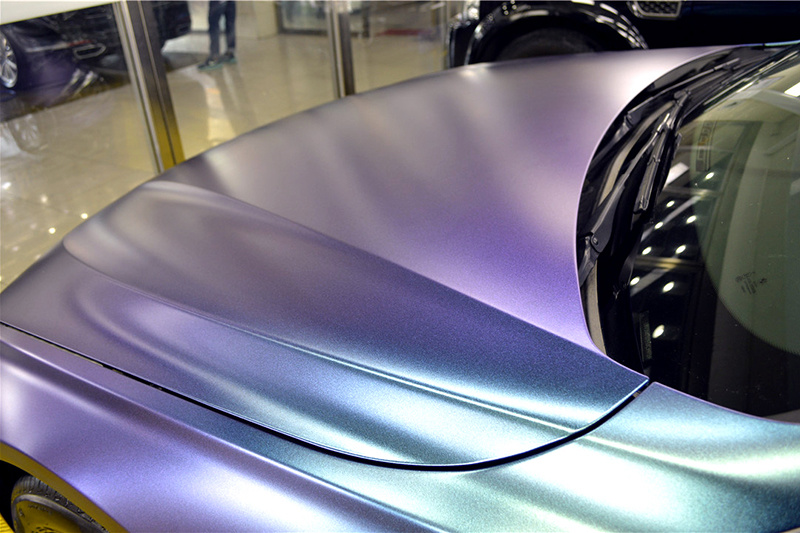How much do you know about the basics of car color matching?
Release time:
2021-08-25
The variety of hues transforms into an abyss, vibrant and colorful, yet there exists a necessary relationship among the various shades, including automotive paint colors. Automotive paint not only serves the purpose of protection against corrosion but also plays a crucial role in adorning the vehicle with a colorful sense of the times. However, since each color possesses its own unique characteristics, it has distinct effects on our vision, psychology, and physiology. Below, let us re-examine the fundamentals of architectural paint colors and how to choose them.
The variety of tones transforms into a deep abyss, colorful and diverse, but there exists a necessary relationship among the various tones, including automotive paint tones. Besides having protective and anti-corrosive functions, the most important role of automotive paint is to adorn the car with a colorful modern atmosphere. However, since each tone has its unique characteristics, it has distinct effects on our vision, psychology, and physiology. Below, let's re-examine the basic knowledge of architectural paint tones and how to use them.

Grasping the basic elements of tone is fundamental to paint color mixing.
Each tone can be defined by three main parameters: hue, brightness, and saturation. Hue is the characteristic that distinguishes different colors, determined by the spectral composition of the light source and the wavelengths emitted from the surface of the object, which can differentiate red, yellow, green, blue, purple, and other characteristics.
Brightness, also known as value, is a characteristic value that expresses the level of light and dark transitions on the surface of an object. By comparing the brightness of various tones, tones can be classified into light and dark.
Saturation, also known as chroma, is a characteristic value that expresses the intensity of color on the surface of an object, distinguishing between bright and dull colors. Hue, brightness, and saturation form a three-dimensional structure, and using these three parameters, we can accurately measure tones.
The colors of nature are diverse, but the most basic ones are red, yellow, and blue, commonly referred to as the primary colors. Other tones can be created by mixing these primary colors in different proportions, resulting in secondary colors. For example, red + yellow = orange; blue + yellow = green; orange and green are considered secondary colors. The secondary colors formed by the primary colors correspond to complementary colors in the color wheel. For instance, yellow and blue combine to form green, and the complementary color to green is red. In colors, adding white will lighten the primary or secondary colors, resulting in tones with different saturations, while adding varying amounts of black will yield different brightness levels. Adding complementary colors to secondary colors can darken the tone, potentially resulting in dark gray or black.
Tones create different environments, whether good or bad.
Effective color layout is of great significance in creating a comfortable working and living environment. Color adjustments can make the environment brighter; relieve eye and body fatigue; enhance joy in work; improve productivity; create a unique environment that reflects a certain style and tone; reduce accidents and disasters, and improve work quality; enhance appreciation for materials, etc.
More news
Wishing you great fortune in the Year of the Ox 2021!
Wishing you great fortune in the Year of the Ox 2021!
2021-02-26
A brand new start, wishing you a prosperous beginning to work. Customize your colors for 2021.
A brand new start, wishing you a prosperous beginning to work, and customizing your colors for 2021.
2021-02-26
How much do you know about the basics of car color matching?
The variety of hues transforms into an abyss, vibrant and colorful, yet there exists a necessary relationship among the various shades, including automotive paint colors. Automotive paint not only serves the purpose of protection against corrosion but also plays a crucial role in adorning the vehicle with a colorful sense of the times. However, since each color possesses its own unique characteristics, it has distinct effects on our vision, psychology, and physiology. Below, let us re-examine the fundamentals of architectural paint colors and how to choose them.
2021-08-25
Quick Navigation
National Service Hotline:+86-0751-3879198
WhatsApp:+8615303061404
E-mail:mlb@mlbcoat.com
Website:www.malaibin.com
Address: No.2, Ping An 1st Road, Zhuji Industrial Park, Nanxiong City, Shaoguan City, Guangdong Province






